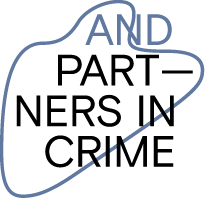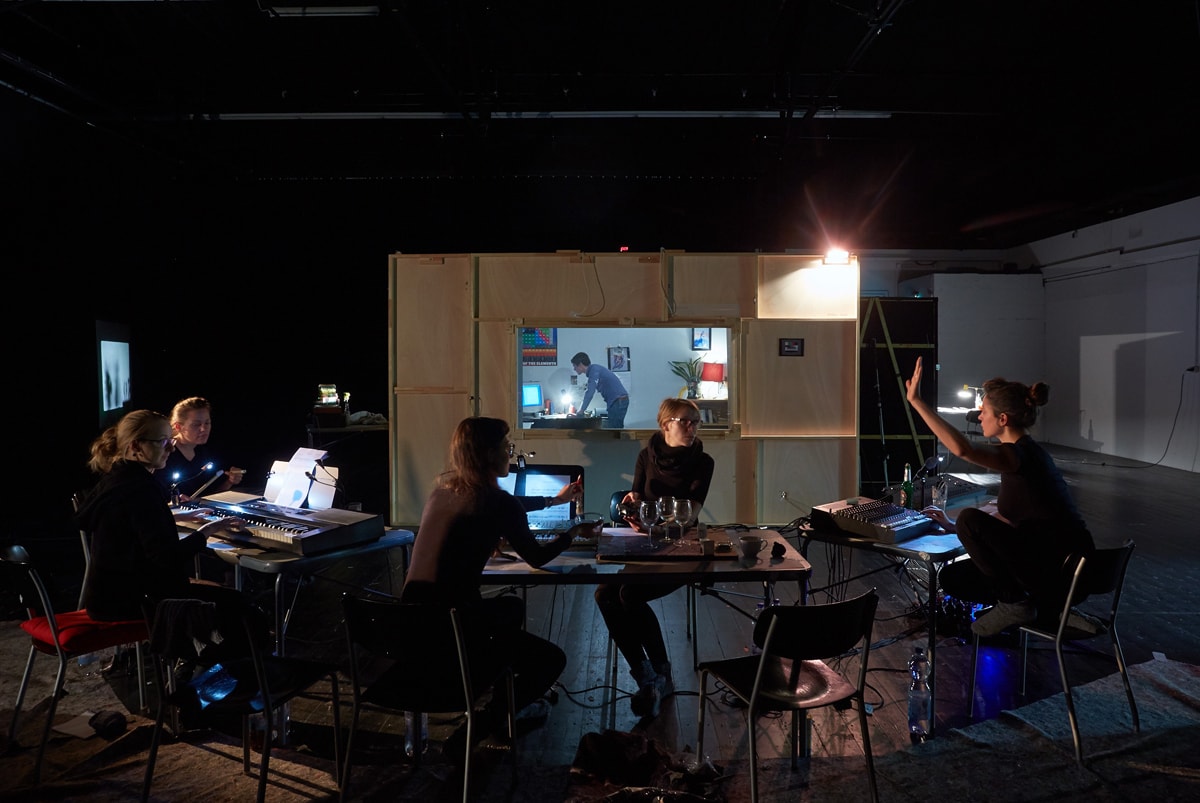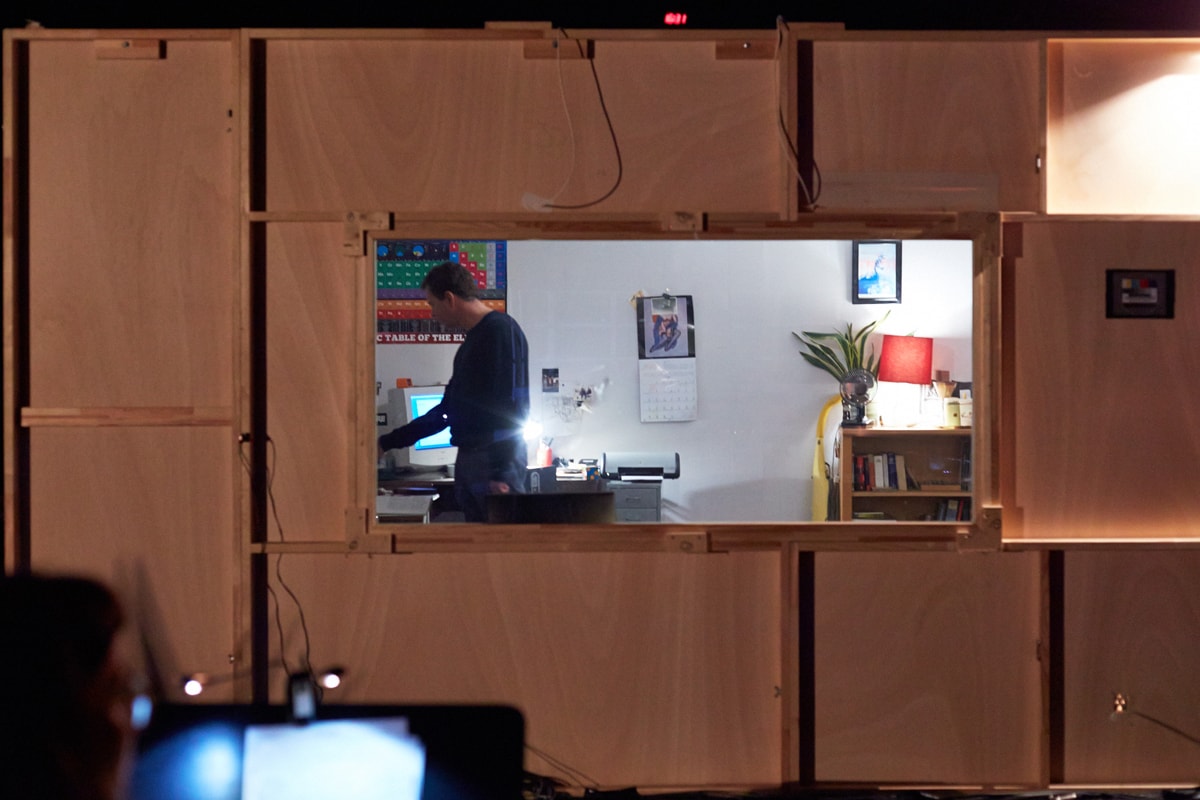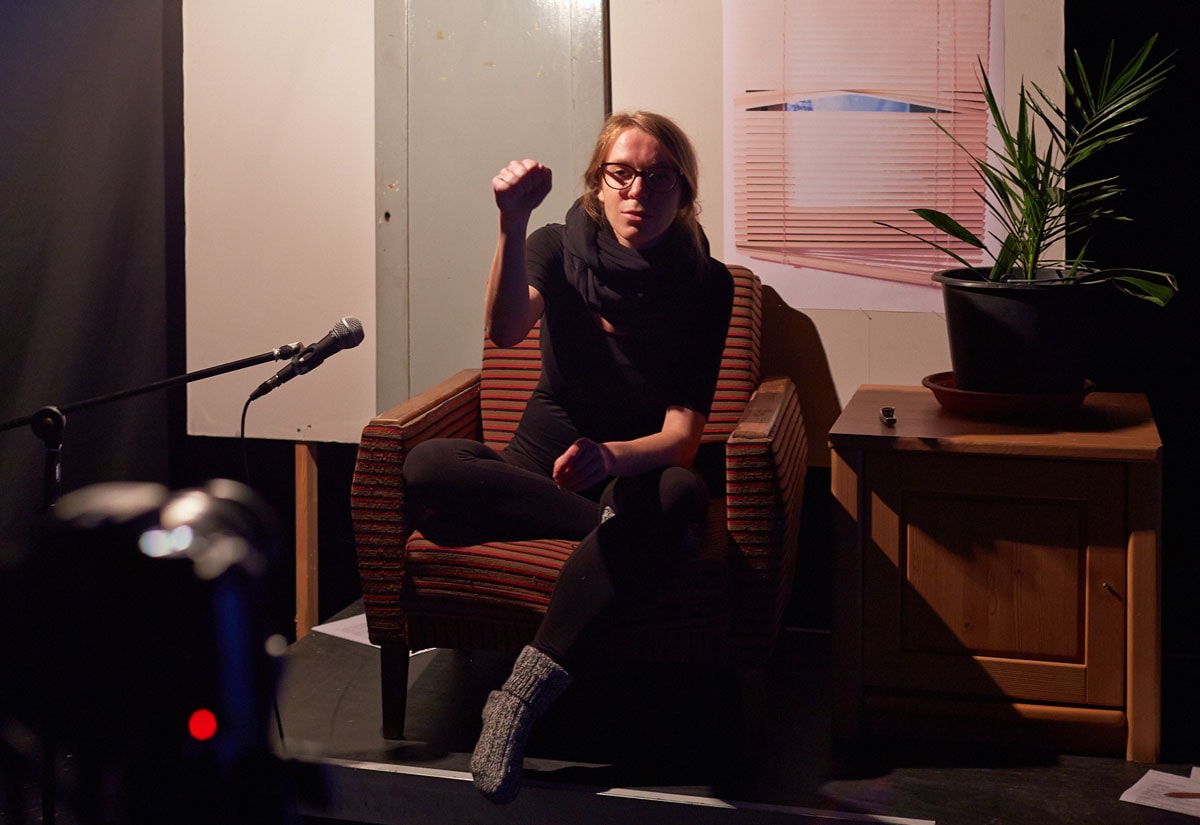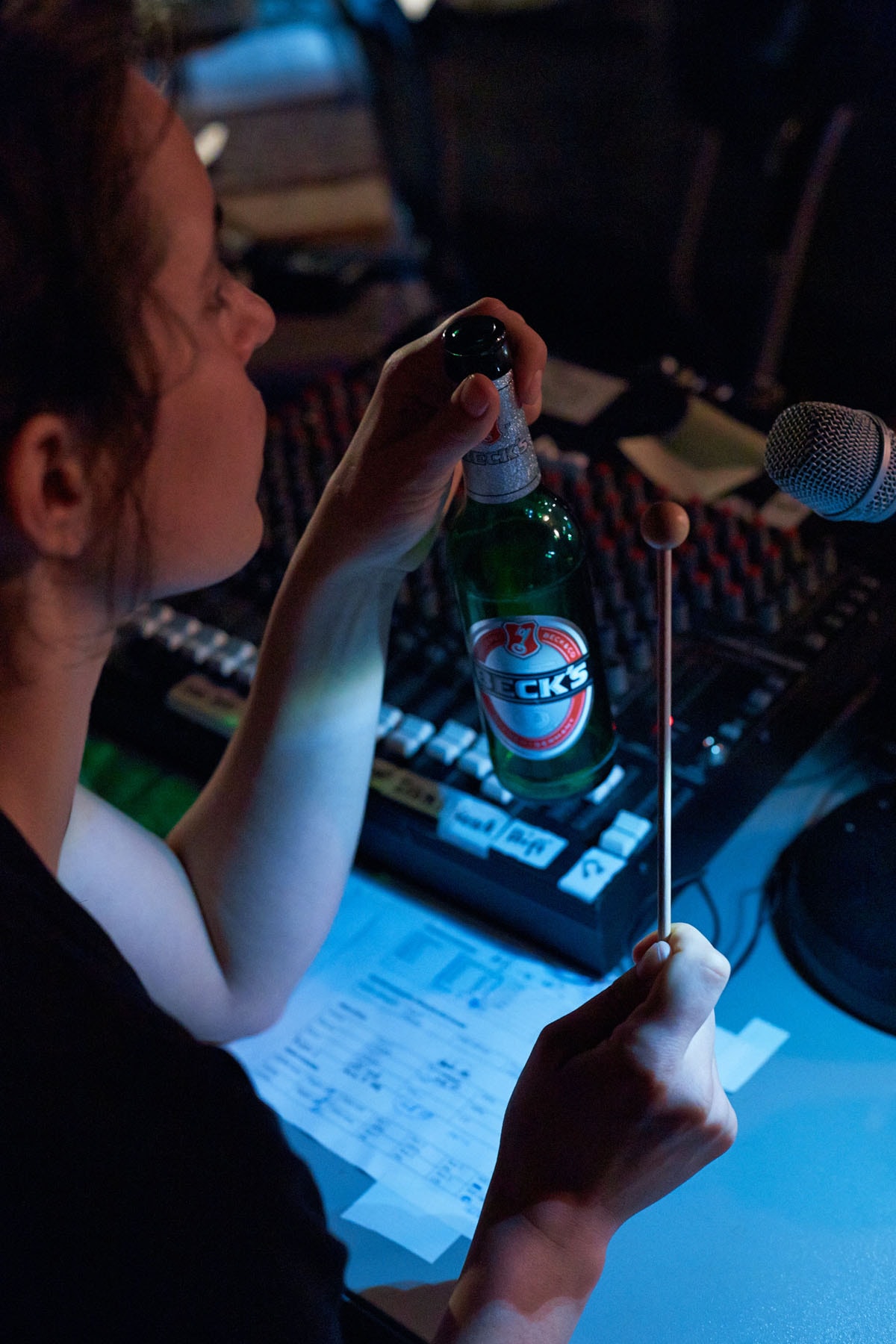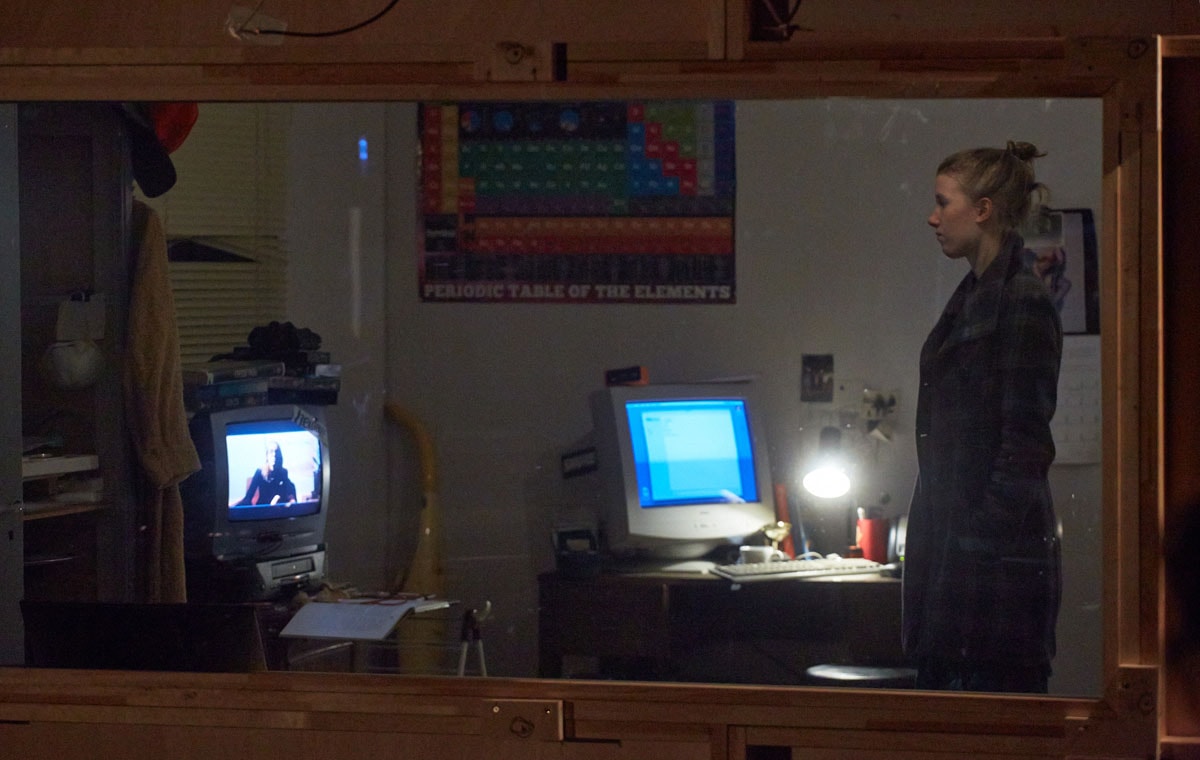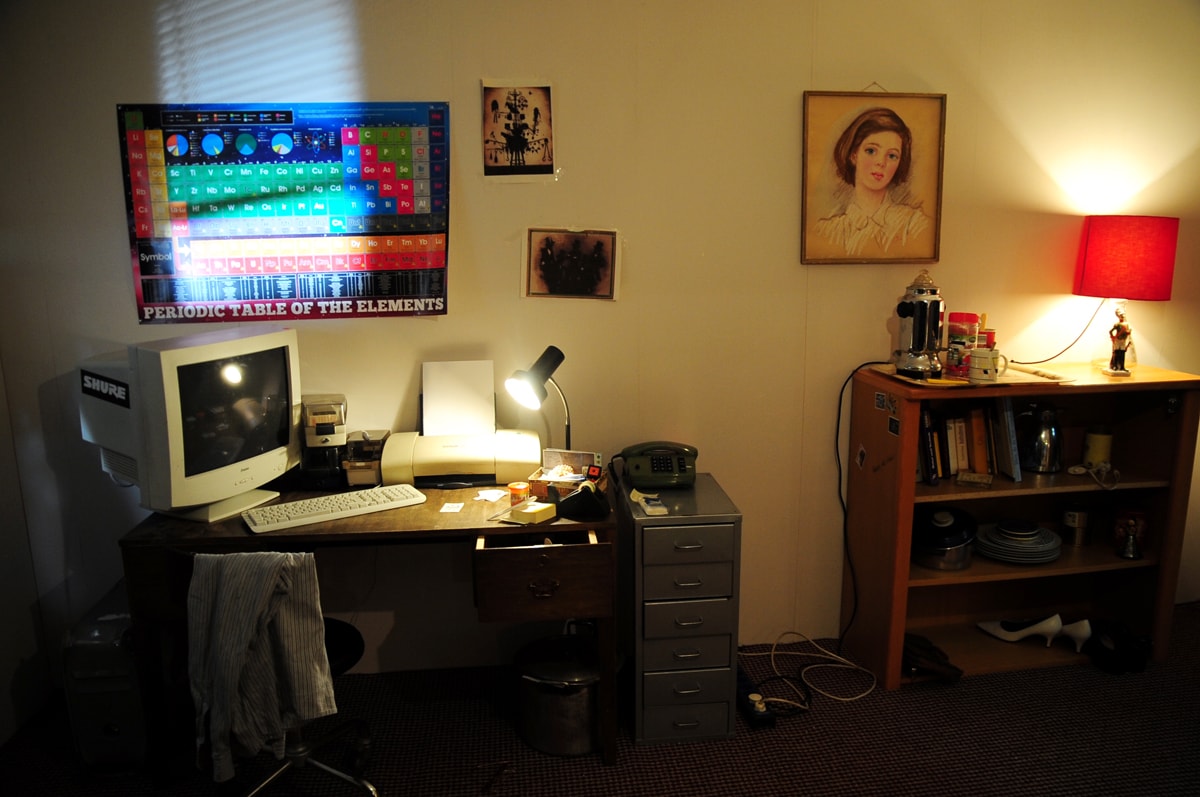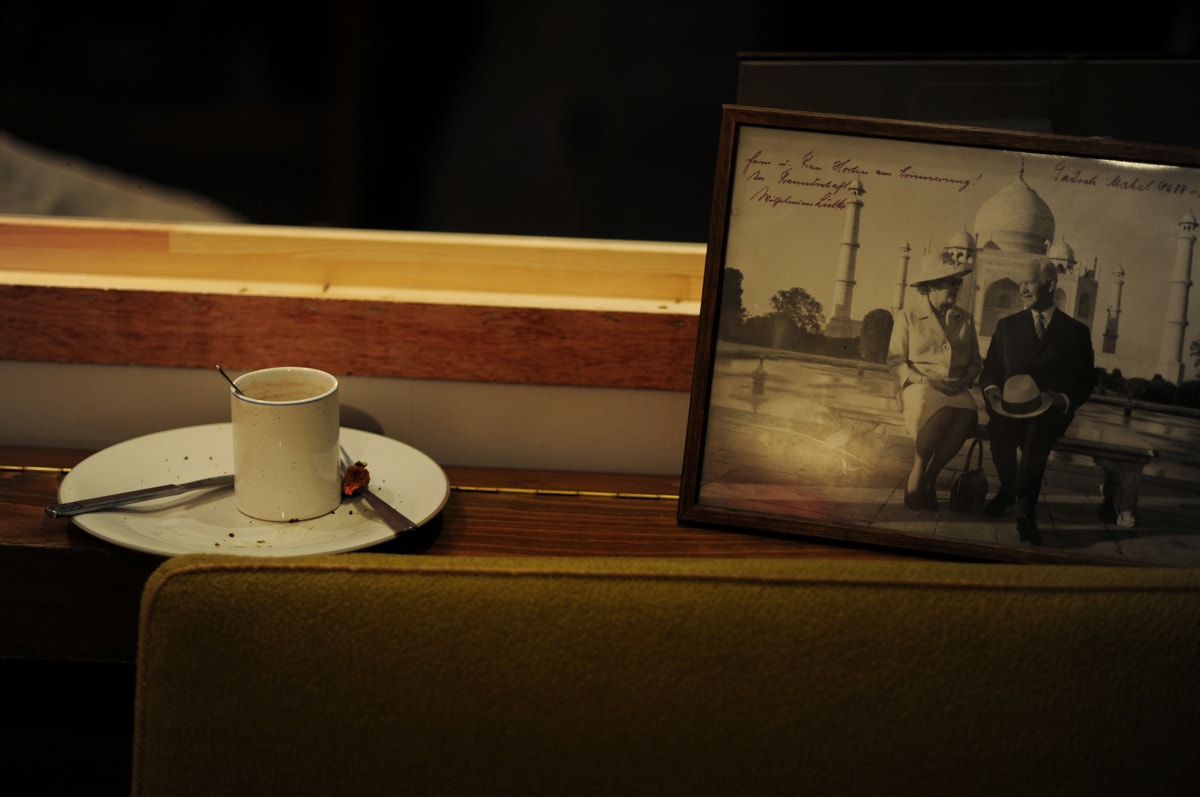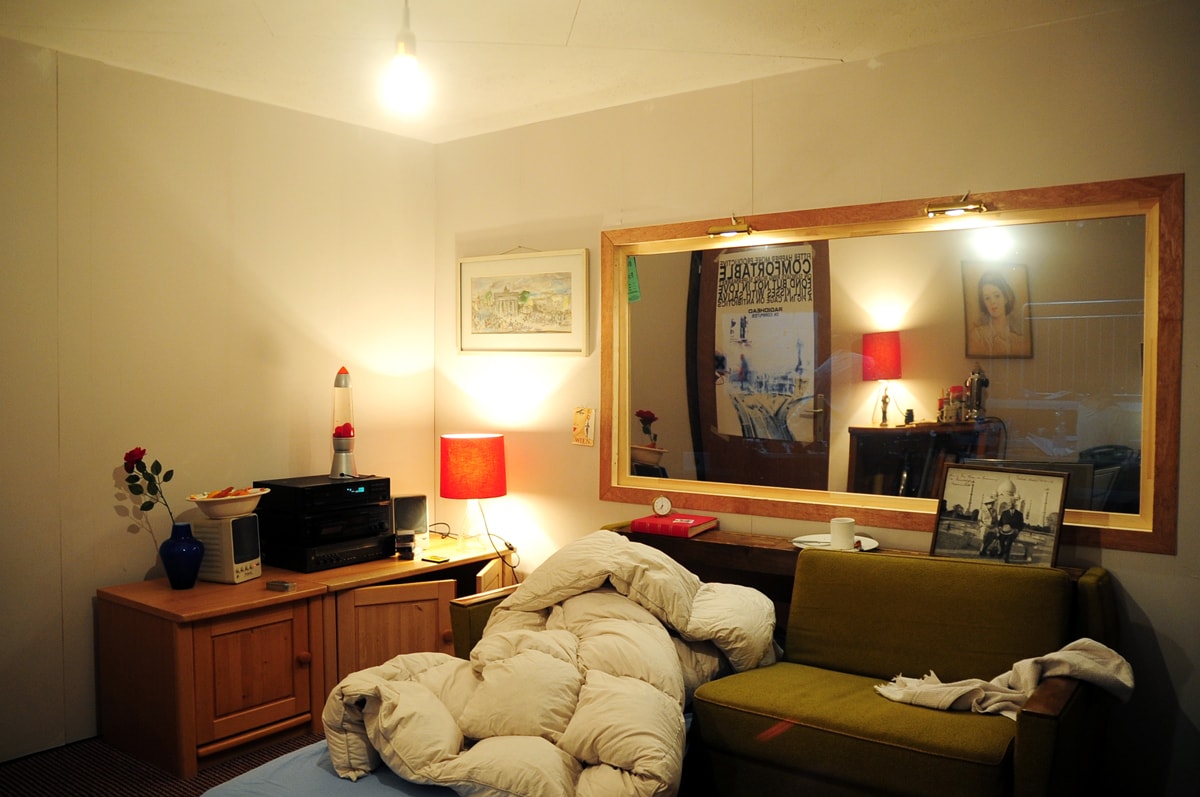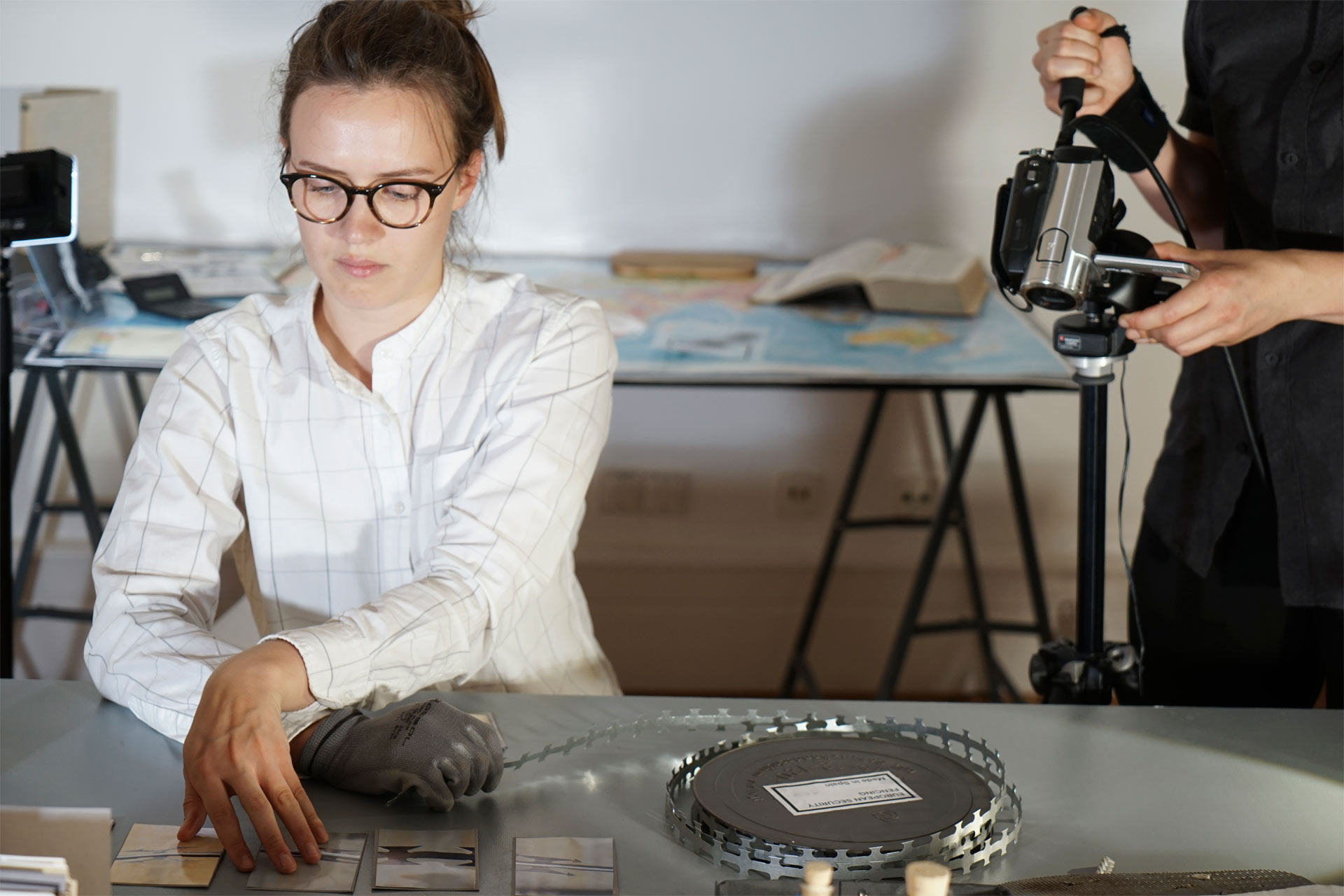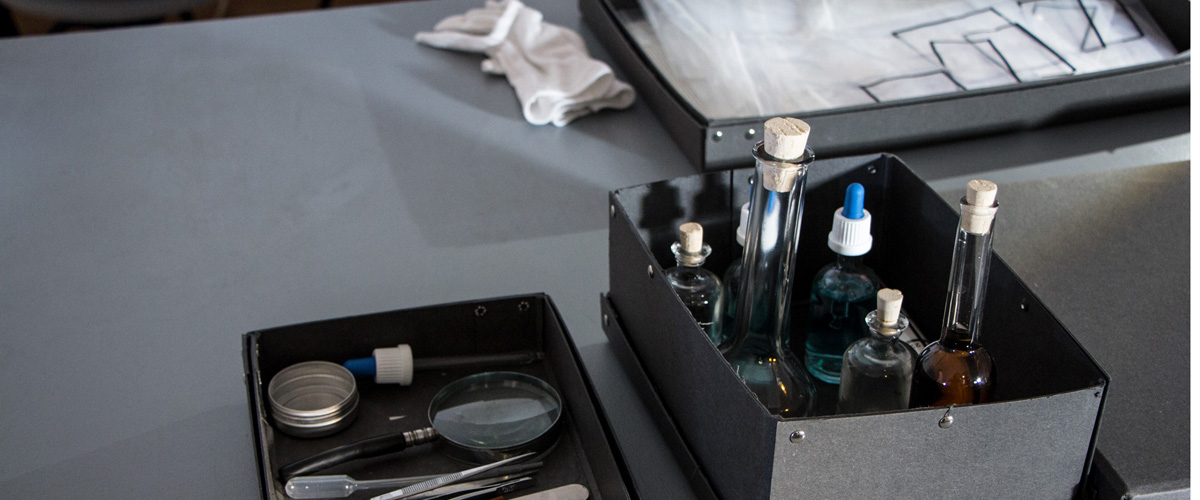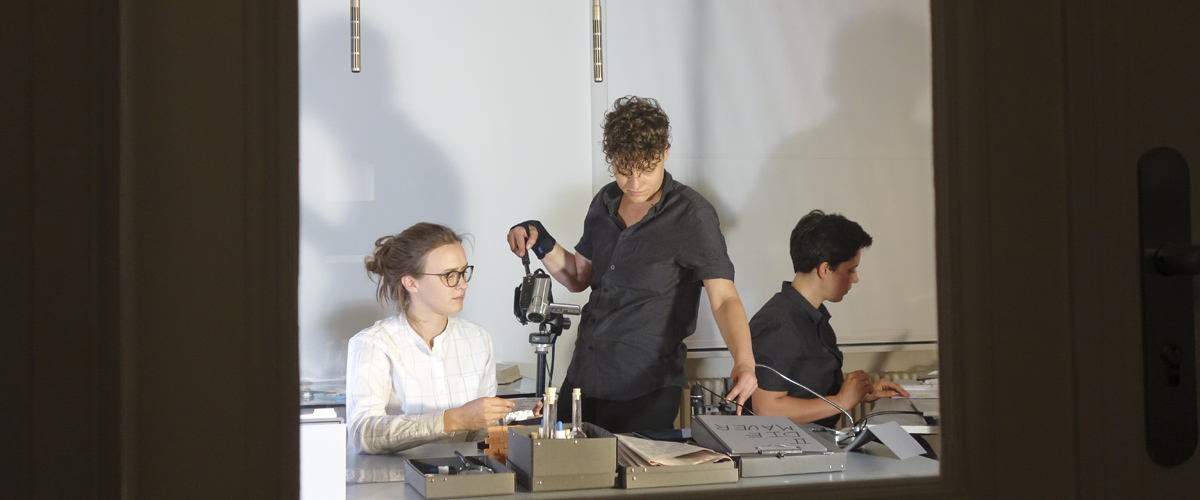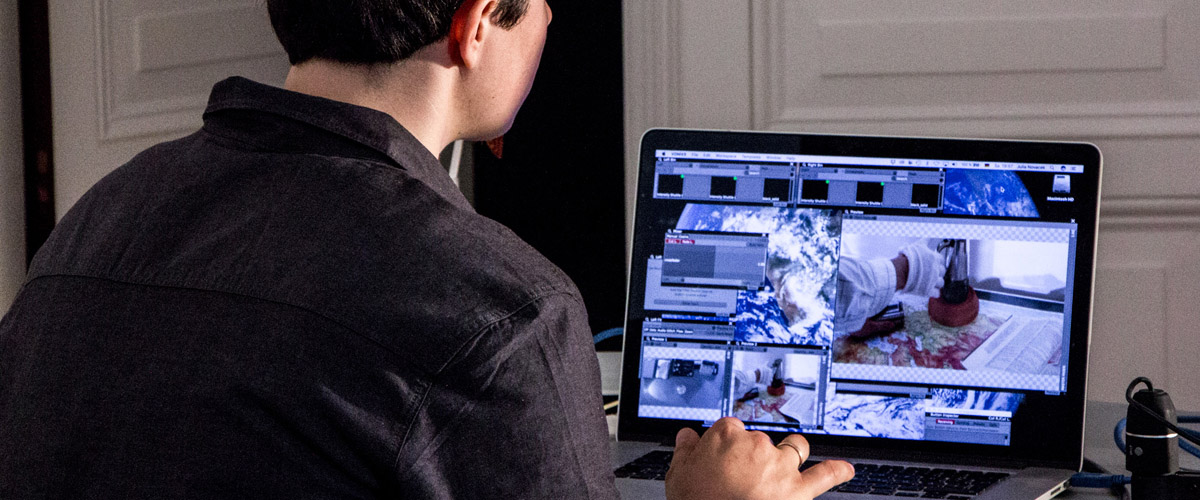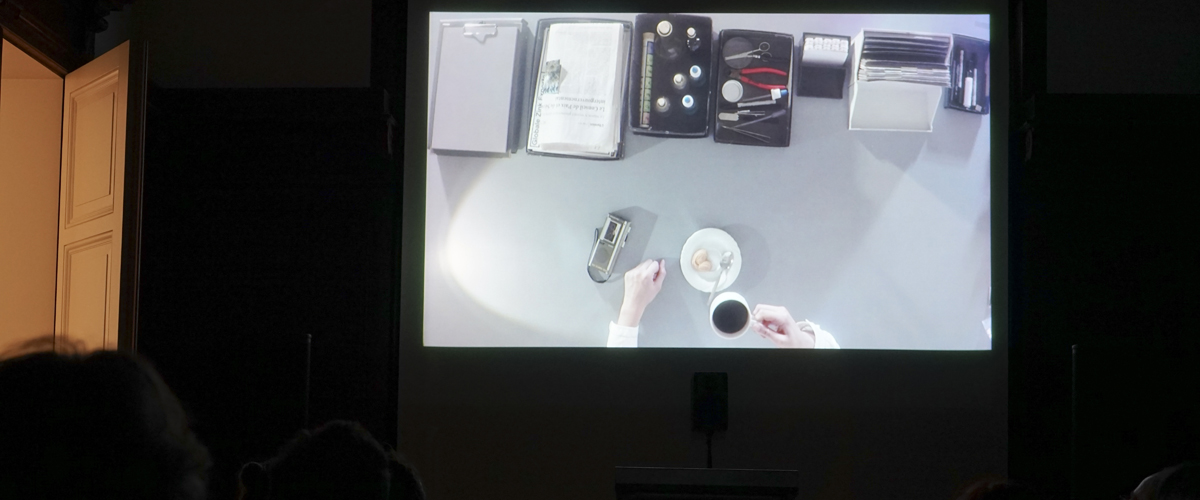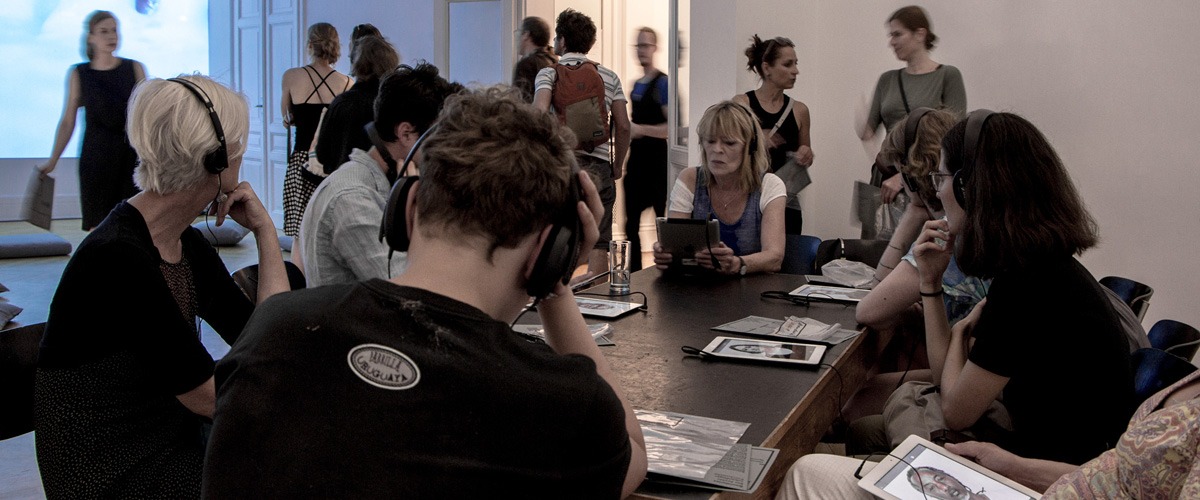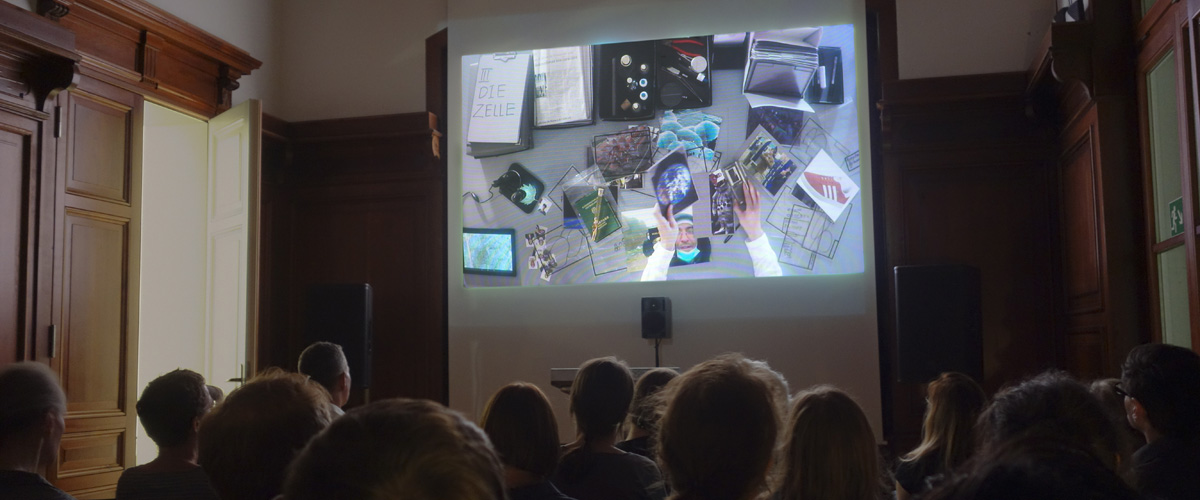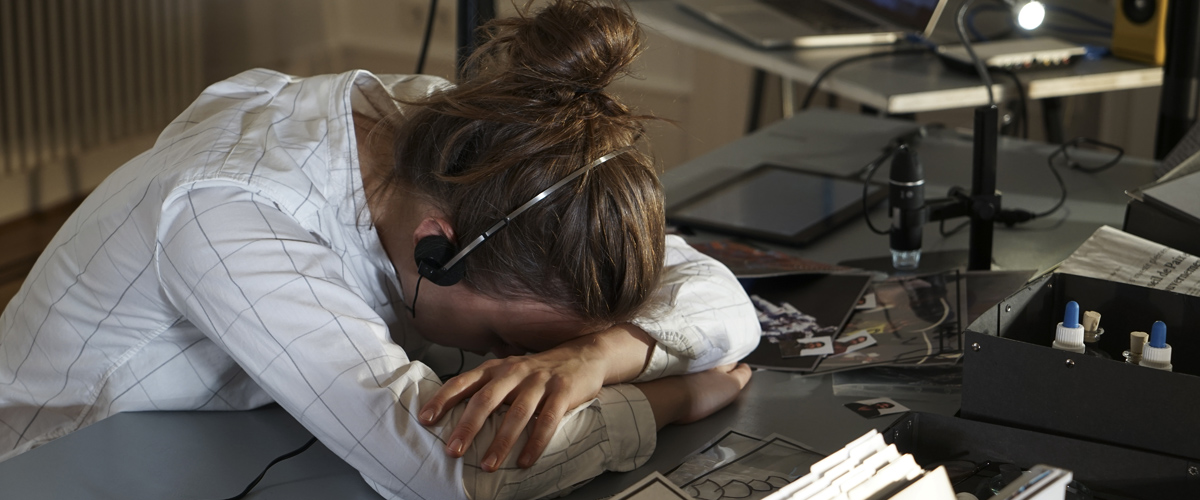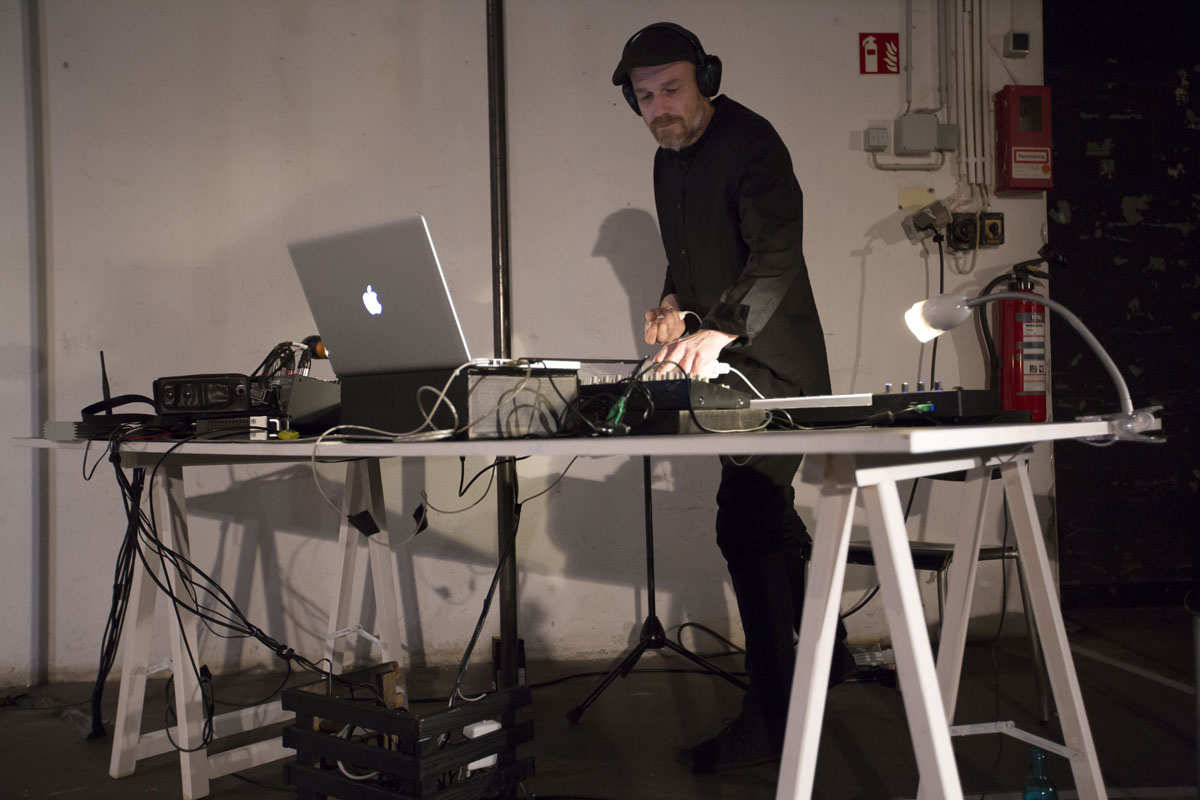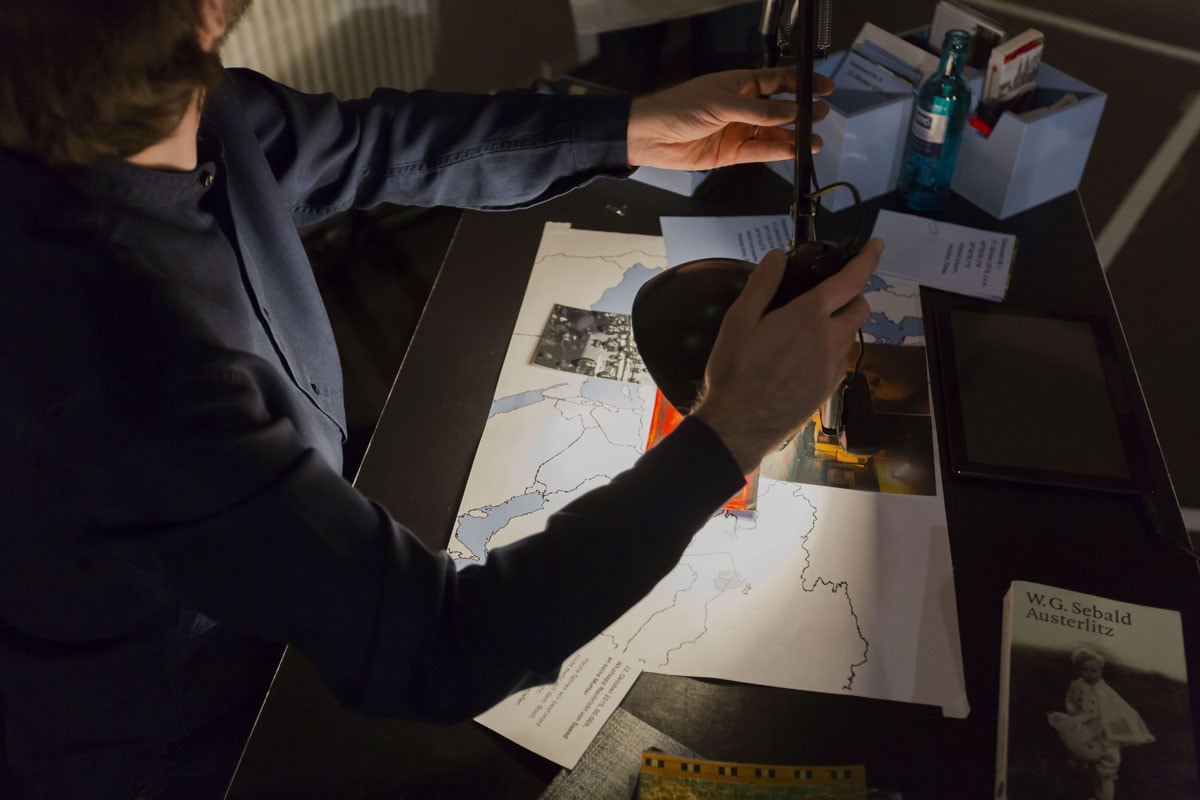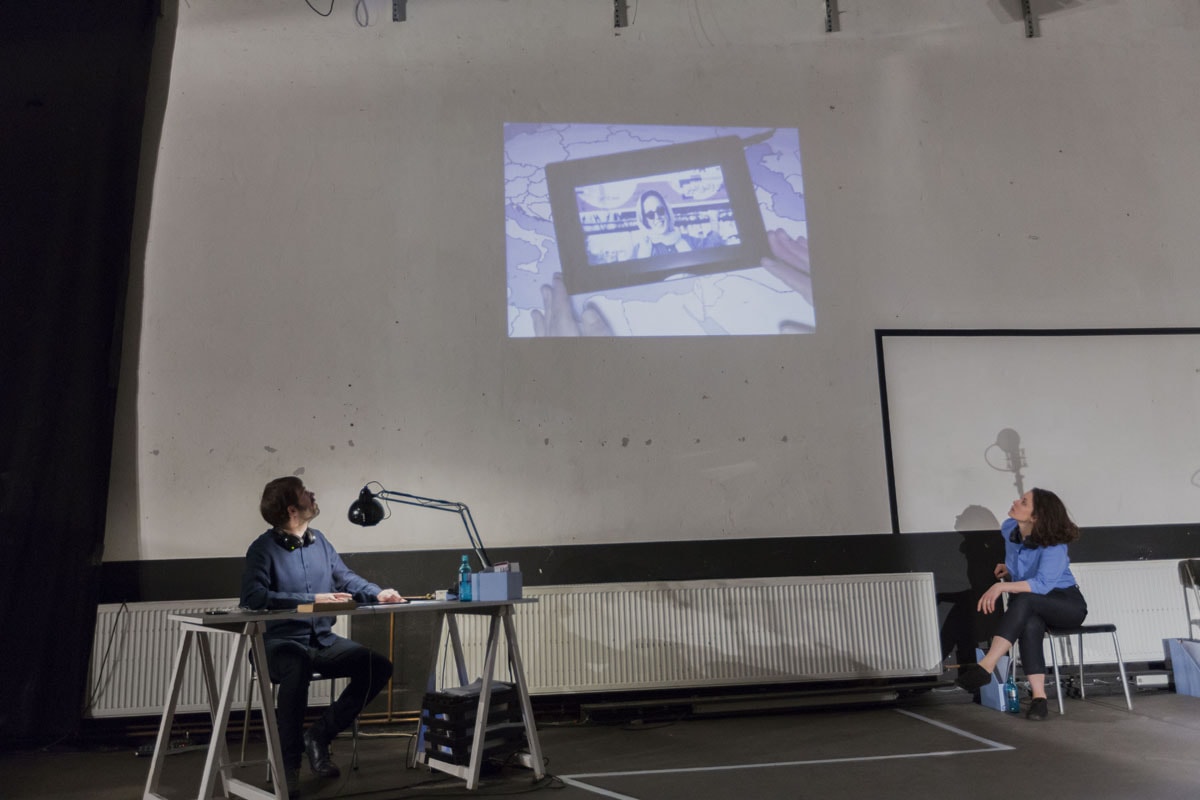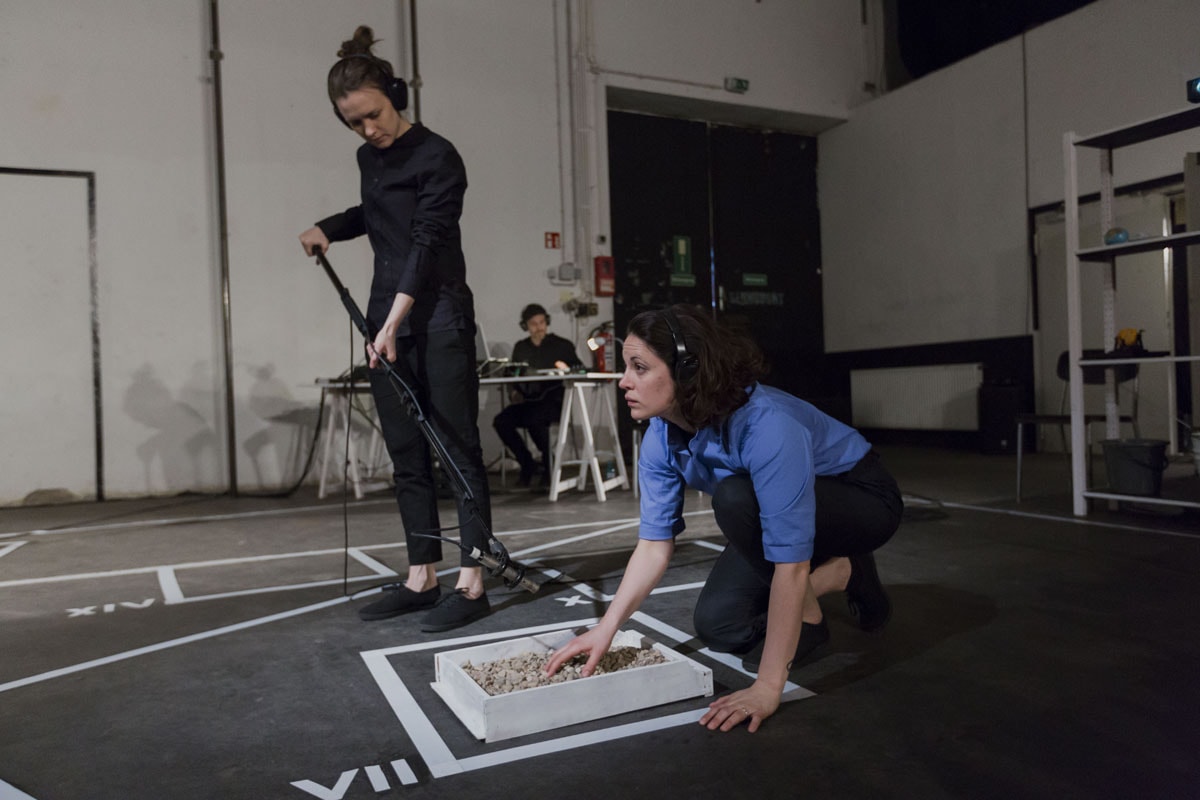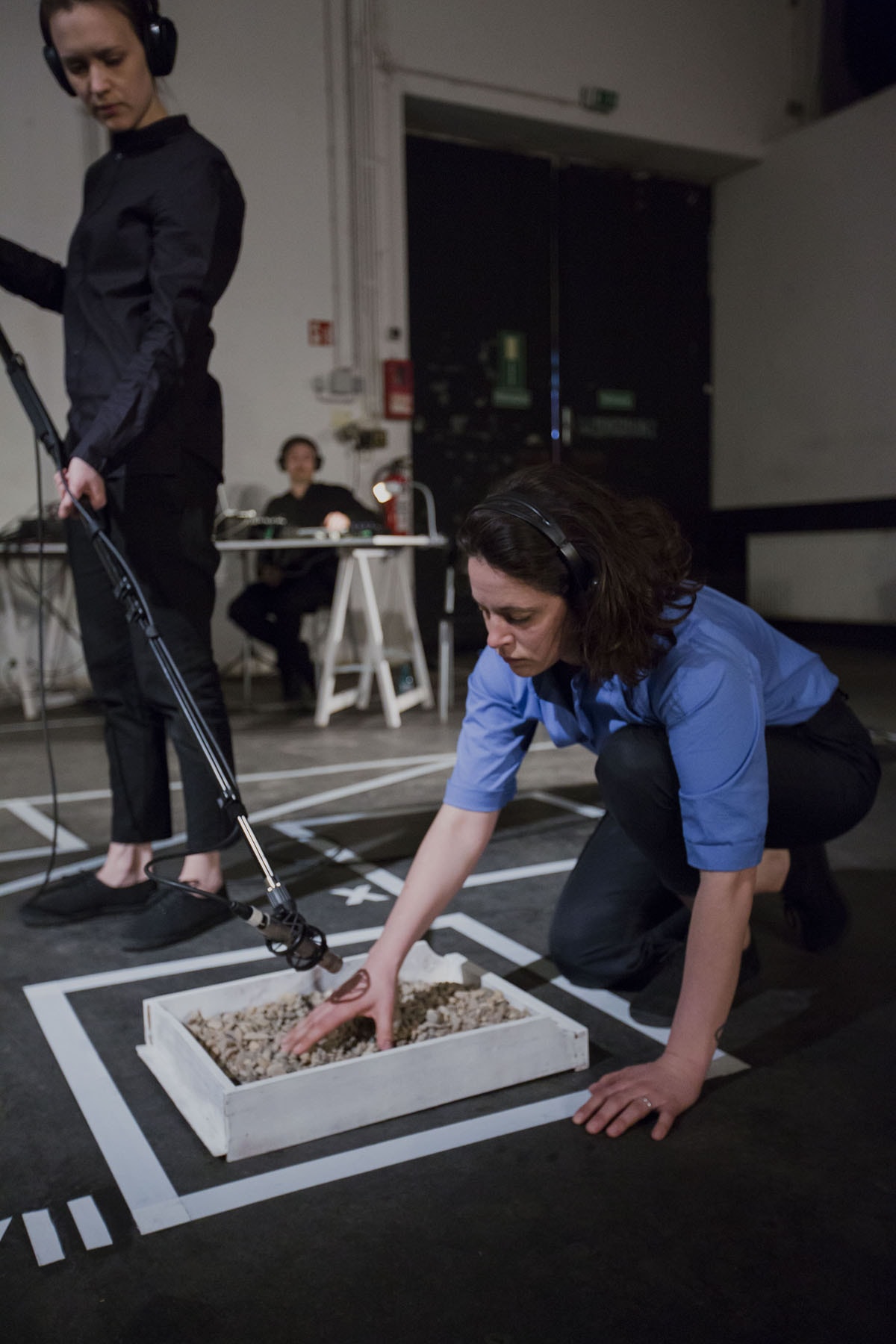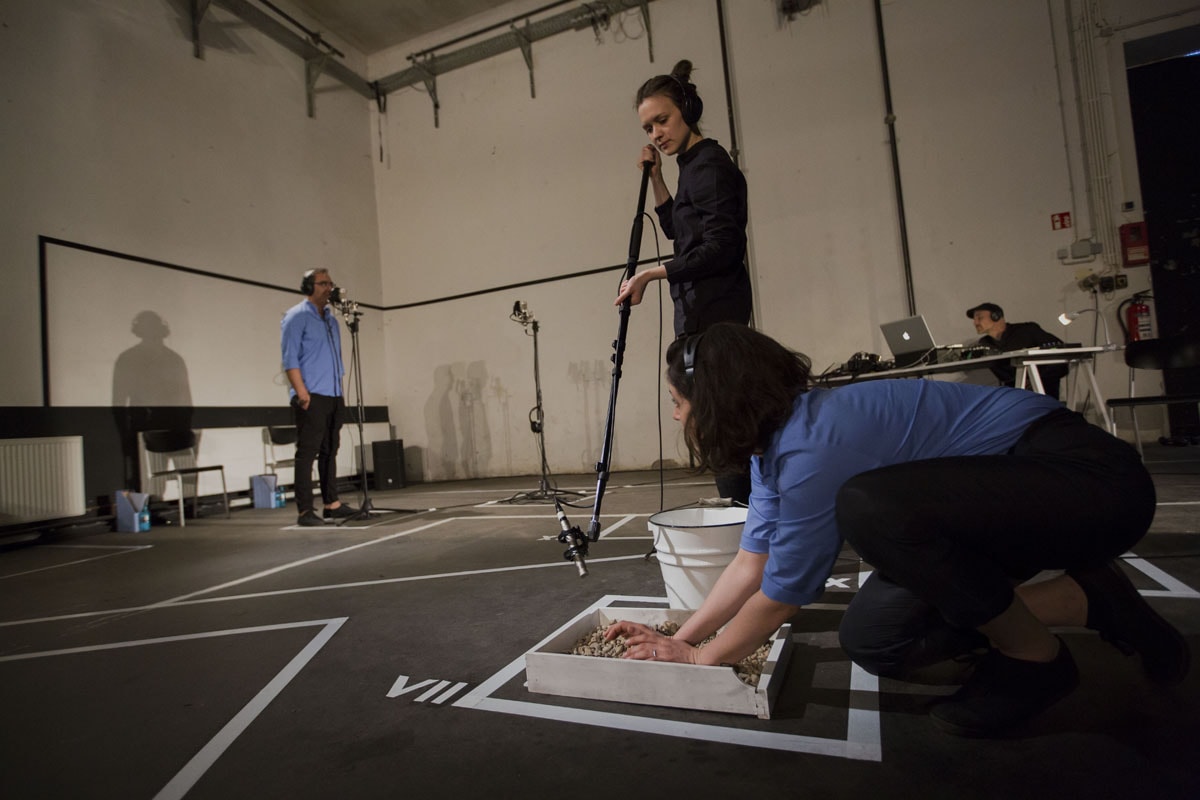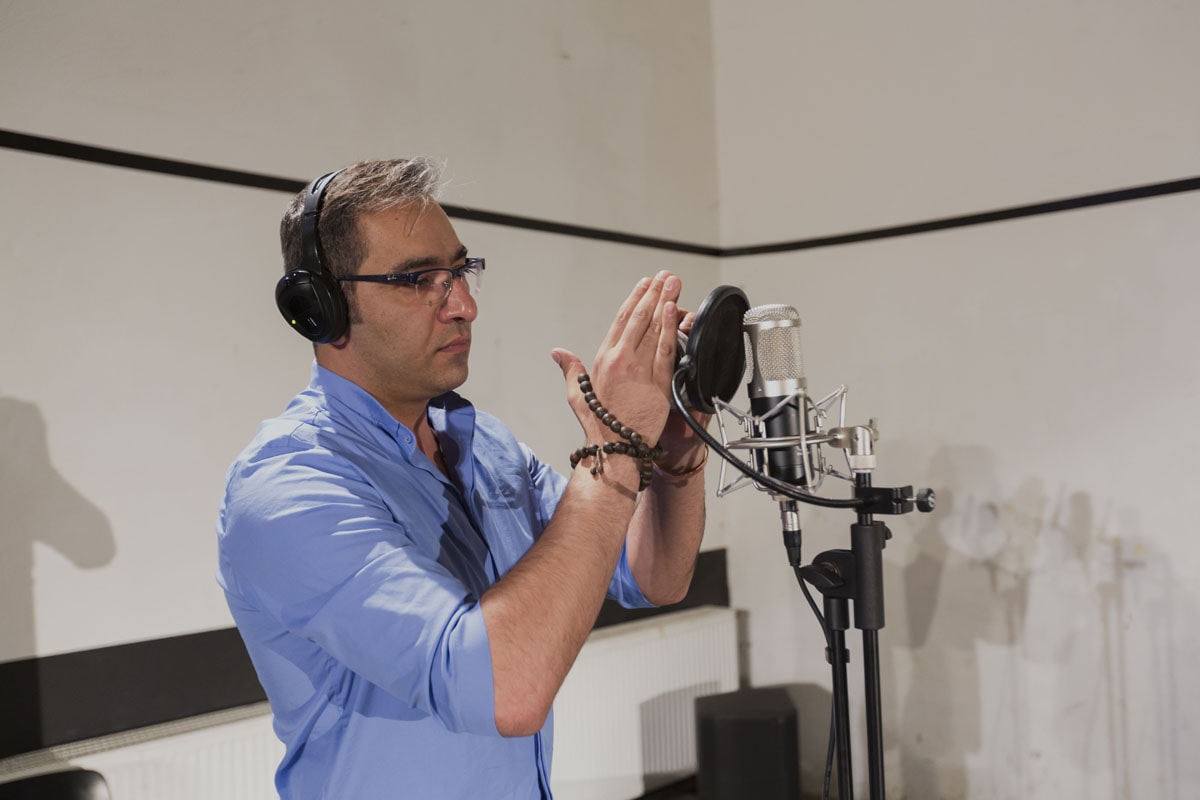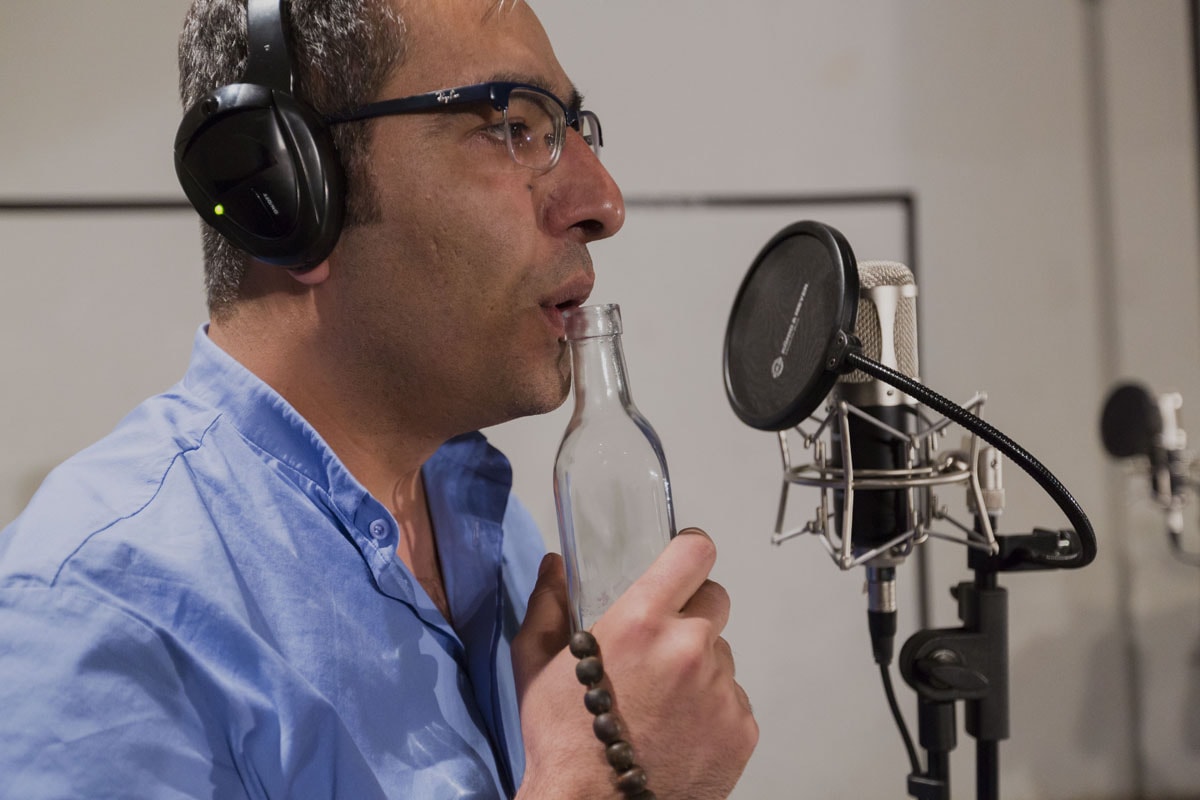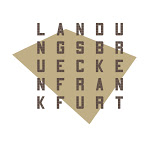SITE OF FICTION
Landestheater Marburg / LAB Frankfurt
2013 / 2014
SITE OF FICTION
A machinery of illusion
The door opens and I enter the room. It is a small, somewhat untidy room with a rumpled bed, a very large mirror on the wall behind it, a closet to the right, a desk, sideboard, armchair - just to name the things that catch my eye first, before I discover the numerous details that are there, when I take a closer look at the room: A bite of honey bread, for example, a text in the printer on the desk, books in the sideboard, pictures on the wall, strange test tubes in the closet, video cassettes and CDs around the players and much more.
Of course I know: This is a set. Because I am in the theatre, in the Frankfurt LAB, to be more precise. And the supposed room is a Site of Fiction and an "machinery of illusion based on motifs by E.T.A. Hoffmann", as the title of the performance I'm visiting here tells me. That's why I don't really consider the room to be an untidy room, but rather the staging of one. And thus I behave quite differently than I would in a room I don't know. I also assume that completely different things can or will happen here. I ask myself, for example, whether someone will perhaps appear under the duvet, or how many interventions in the arrangement on my part are calculated by the staging or can be tolerated by it.
Anyhow, a videotape that I insert cannot be played. And what makes the whole thing even more special - or theatrical - is the large mirror, which is not by chance reminiscent of the one-way mirrors in interrogation rooms that we know from TV crime novels. In other words: unlike in a normal room, I feel observed and suspect spectators behind the mirror, spectators, however, whom I cannot - at least not yet - personally identify.
And the fact that I feel observed by others also leads to a self-observation of my actions, in which these suddenly seem like played actions to me. In a certain sense, I watch myself play a role in front of unknown spectators - which at the same time raises the question whether I am always doing this in a normal room, supposedly unobserved, too. With Jacques Lacan, one could speak here of an experience of that gaze of the 'big other', which makes us 'viewed beings' in the 'spectacle of the world'. And it is this view from which I am now playing the game - I attempt to look through the mirror by placing my hands on it, or I lean out of a window, which actually allows me to see one of the performers who, together with the others outside the room, produces what reaches me inside the room.
But these actions also remain part of the game in a certain way, and next to them, I always behave as Diderot would have wished, i.e. I pretend that there are no spectators behind the 'fourth wall', which actually materializes in the one-way mirror. But before I see the performer in the outside space, I can't really be sure whether there are actually spectators behind this 'fourth wall'. At some point, for example, I listen to the answering machine, read the texts on the desk - and finally get involved in a chat conversation on the computer, which ends with me being asked to get a red dress out of the closet, the back wall of which is then unexpectedly opened by a performer who invites me to take a seat on a grandstand in the dark outside space, where several people are already sitting, who probably were in the room before me.
From there I can now see the ensemble of performers acting in front of the one-way mirror. Behind this one-way mirror I see another visitor entering the room and beginning to orientate himself in the scenery. I could not say at what point in time this visitor, in turn, feels observed.
Written by Dr. André Eierman
Supported by:




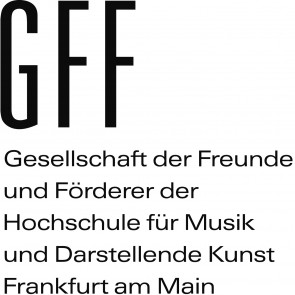
The theatrical installation is by my definition a postmodern narrative strategy.
Unlike installative approaches that come from the visual arts, it is narrative. It narrates in any way and that is its theatrical component. Installation is postmodern narrative as space.
Site of fiction is the attempt to turn this thesis into practice.
Idea & Concept: Eleonora Herder
Von & mit: Eleonora Herder, Maria Isabel Hagen, Michaela Stolte & Sabine Born
Production: Lena Krause
Technics: Stine Hertel and Camilla Vetters
Musical advice and arrangement: Rebecca Berg
With special thanks to Bastian Kleppe for his loving and generous support.
Without the advice of Jost von Harleßem this project would'nt have been successful either.
“Das Projekt „Site of fiction“ verstört die Erwartungen des Publikums durch die geniale Form seiner Publikumsbeteiligung.”
(Lukáš Jiřička: „Eleonora Herder. Site of fiction“, A2 Magazin, Prag 17.07.2013)
“Und die Tatsache, dass ich mich von anderen beobachtet fühle, führt auch zu einer Selbstbeobachtung meiner Aktionen, in der mir diese auf einmal wie gespielte Aktionen vorkommen. D.h. in gewisser Weise schaue ich mir dabei zu, wie ich mich vor unbekannten Zuschauern als Rolle spiele – was gleichzeitig die Frage aufwirft, ob ich dies nicht vielleicht auch in einem gewöhnlichen Zimmer, vermeintlich unbeobachtet, immer irgendwie tue.”
(Dr. André Eiermann, Juli 2013.)
„Eine einzigartige Theatererfahrung.“
( Vera Zimmermann: „Theater ganz anders: Rätsel, Snack und Spiele“, Oberhessische Presse, 25.06.2013)
Making of:
Long film documentation of the whole performance:
